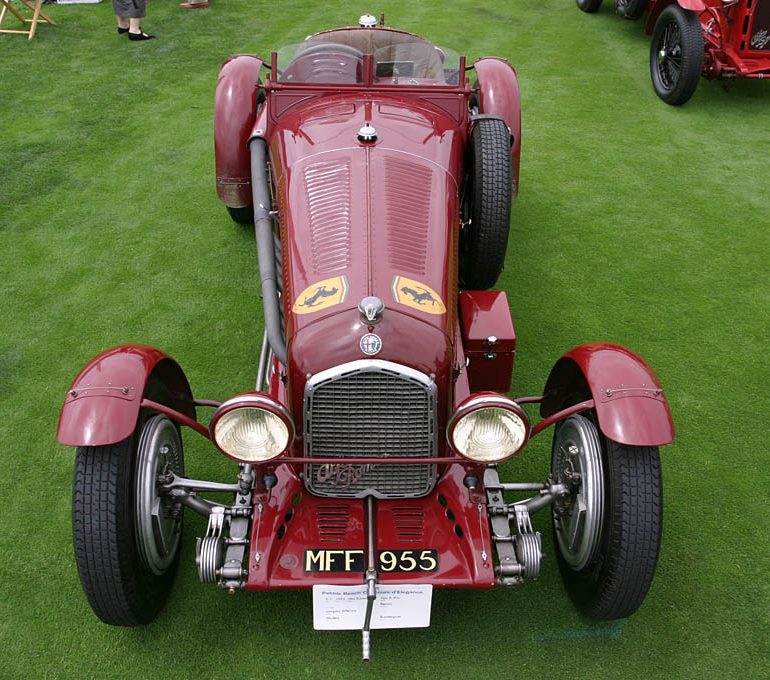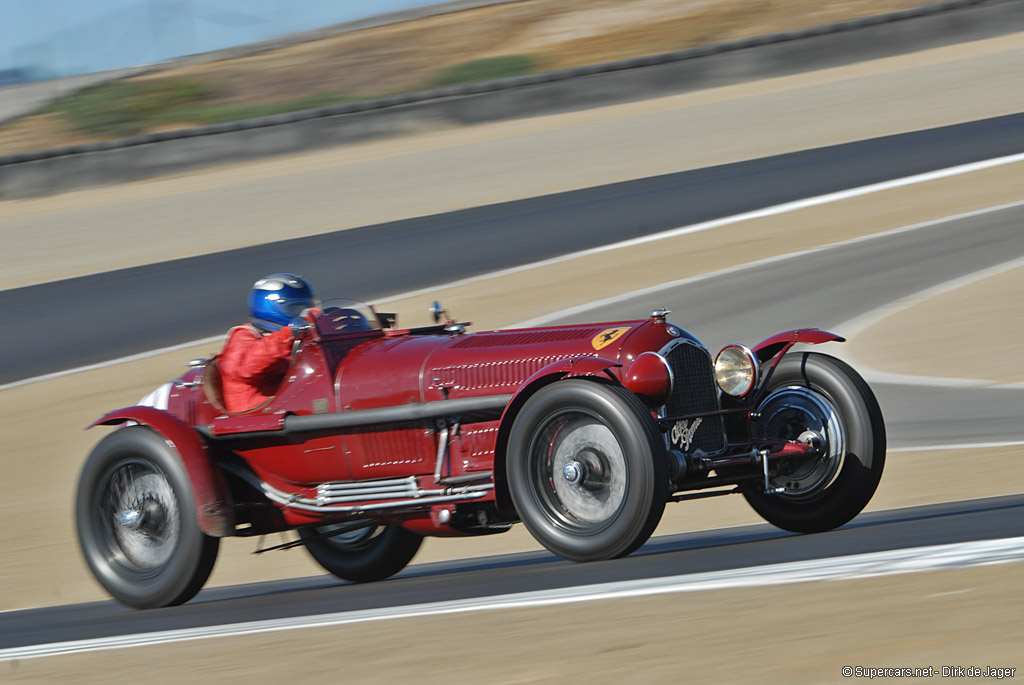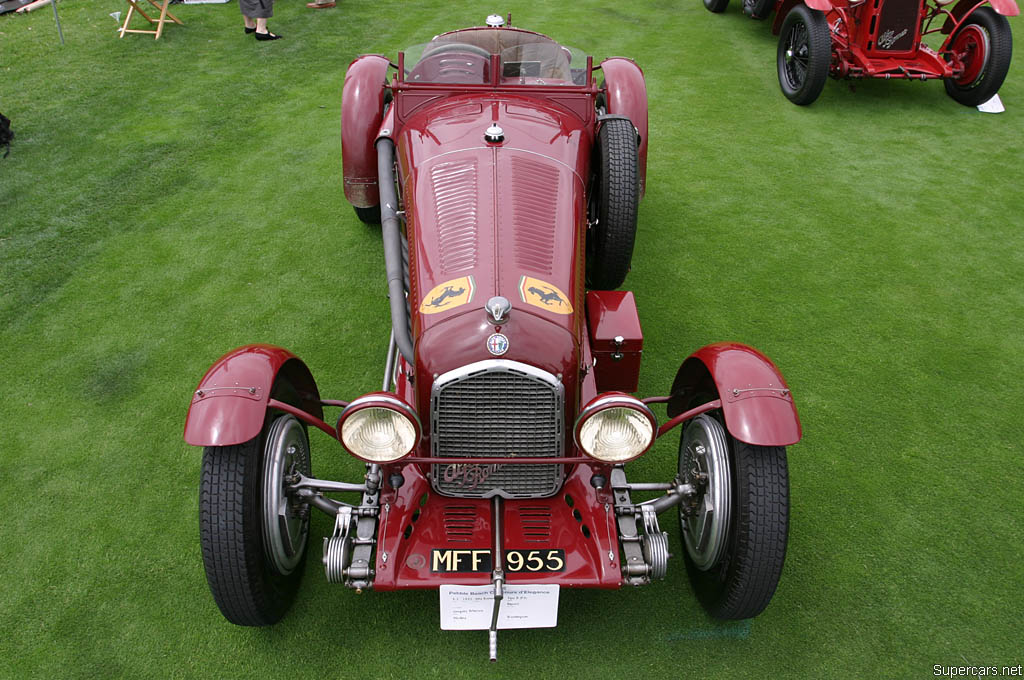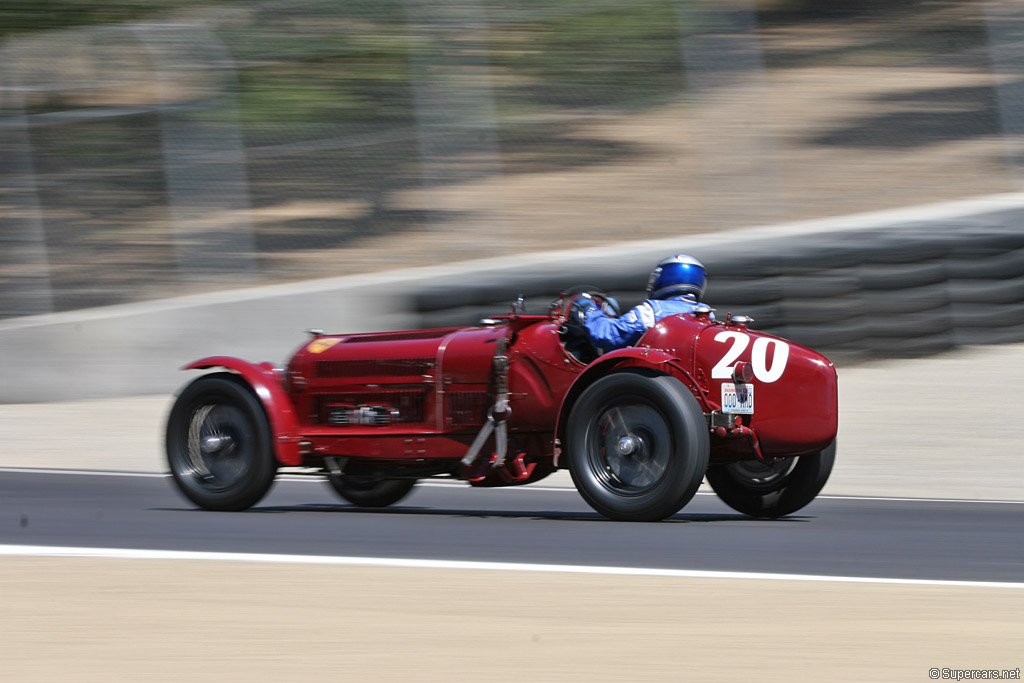1932 Alfa Romeo Tipo B P3 Biposto
Of the thirteen or so Alfa P3s made, only one, chassis B5001, was converted into from Grand Prix specification into a sports car for the 1935 Mille Miglia. It went on to win the race at the hands of Carlo Pintacuda and Alessandro Della Stufa. They were followed by five more 8C2300s, giving Alfa Romeo a clean sweep of the winners list. In fact, of the top 17 positions, 16 of those were Alfa Romeos. What greatly contributed to this success was a great engineering by Vittorio Jano and race management by Scuderia Ferrari.
The Biposto stared life a standard Grand Prix car and raced numerous events from 1932-1933 as a Monoposto. This including it’s potent specification which prominently used aluminum in the design. It also used a unique driveshaft arrangement that split the power in the center of the chassis and send a driveshaft to each rear wheel. This allowed the driver to sit much lower in the chassis and let the car have a lower overall stance. In this configuration, chassis B5001 won the fabled GP of Monaco, but was converted in 1935 to a Biposto for sports car racing.
To make the car more suitable for road circuits, the chassis was shortened a fitted two two-seat bodywork. Furthermore, cycle fenders and front headlights were fitted. In this configuration it race the Mille Miglia, Targa Florio and other Italian events with Carlo Pintacuda at wheel.
Since the P3 was nearly 500 lbs lighter than the 8C2300 sportscar, the thinly disguised the Biposto was a an easy choice for victory. Furthermore, it established a trend of Grand Prix technology handed down to sports cars.
In Detail
| submitted by | Richard Owen |
| type | Series Production Car |
| race victories | 1935 Mille Miglia |







